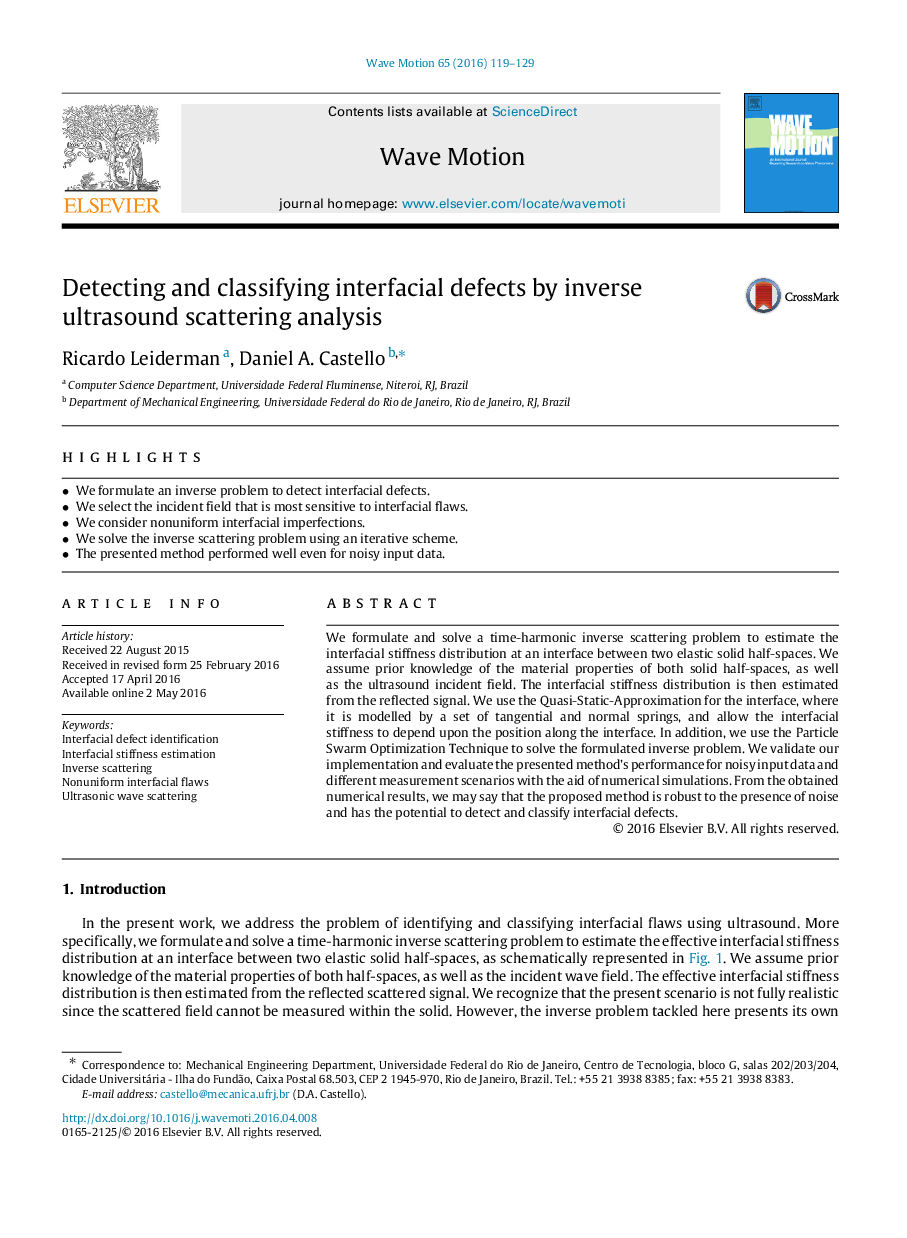| Article ID | Journal | Published Year | Pages | File Type |
|---|---|---|---|---|
| 1900026 | Wave Motion | 2016 | 11 Pages |
•We formulate an inverse problem to detect interfacial defects.•We select the incident field that is most sensitive to interfacial flaws.•We consider nonuniform interfacial imperfections.•We solve the inverse scattering problem using an iterative scheme.•The presented method performed well even for noisy input data.
We formulate and solve a time-harmonic inverse scattering problem to estimate the interfacial stiffness distribution at an interface between two elastic solid half-spaces. We assume prior knowledge of the material properties of both solid half-spaces, as well as the ultrasound incident field. The interfacial stiffness distribution is then estimated from the reflected signal. We use the Quasi-Static-Approximation for the interface, where it is modelled by a set of tangential and normal springs, and allow the interfacial stiffness to depend upon the position along the interface. In addition, we use the Particle Swarm Optimization Technique to solve the formulated inverse problem. We validate our implementation and evaluate the presented method’s performance for noisy input data and different measurement scenarios with the aid of numerical simulations. From the obtained numerical results, we may say that the proposed method is robust to the presence of noise and has the potential to detect and classify interfacial defects.
